“This is something I never thought I’d do.”
–Hazel Dell (VANATTA) KLEMKE (6.12.1897-7.1.1998)
Spoken by her in a dream Amy had in 1999.
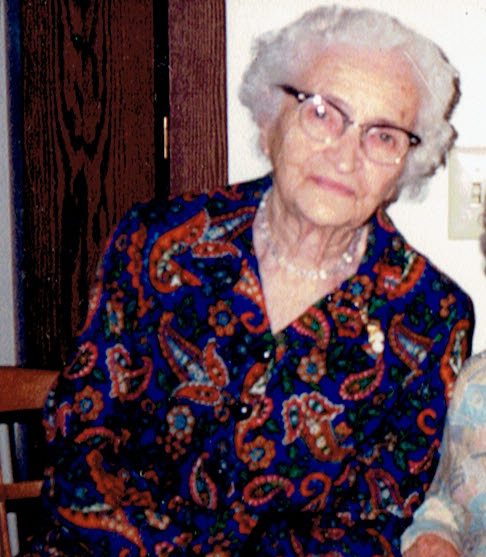
In August 2016, I, Amy and daughter Mina Uehara left Japan to visit the town of Zäckerick/ Siekierki on the east bank of the Oder River that separates Poland and Germany. But, allow me to drift back to 1999.
In 1989, The Berlin Wall, the German Democratic Republic (GDR or DDR), the Soviet Union, had come to an end. I became interested in visiting that area in the late 1990’s especially when my paternal grandmother, Hazel Dell (born Vanatta) KLEMKE, died just after her 100th birthday in January 1998. She was born December 6th, 1898.
Living in Japan, I could not attend her 100th birthday with relatives in her home in Minatare, Nebraska. I could also not attend her funeral in 1998. My parents had visited us in Japan in the fall of 1997. She told them that she would wait for them. She did and died shortly after their return to the USA.
It was a great loss to me. She had almost made it to having lived in three centuries! Just two more years left to go. But, she was rather healthy and independent until her death.
I felt like she had taken the USA with her. She had seen so much and embodied the USA history within her.
I felt alone. Floating. Far across an ocean of waves that was taking my family from me. Or, rather, taking me from my family?
I was becoming a person who had left her homeland for another land. What did that mean? It is the same story for any immigrant. One leaves. One is left.
With my parents, Betty and Don Klemke (Hazel’s son), we began to actively research our ancestry.

They drove through Wyoming, Nebraska, and other states in search of my father’s relatives and ancestors as well as my mother’s ancestors and relatives in other states like Nebraska, Indiana, Kentucky.
We used the many genealogical societies, the Internet’s new online genealogy groups, such as Rootsweb lists, Yahoo lists, Gen Forum, Ancestry.com, microfilm records from The Church of Latter Day Saints in Tokyo and Salt Lake City, Utah and invaluable research from other family members. We are grateful to those who continued to gather information and save it for future generations.
We made wonderful contacts, new friends and found relatives in the USA.
But, it was in a dream after my grandmother, Hazel’s death, that I was given a sign to visit the birth town of our KLEMKE, RICHNOW, HERSE ancestors.
DREAM/ VISION:
In the dream, Betty and Don and his sister Frances Irene, and mother Hazel were excited to see the sites in Berlin, Germany. It was Hazel who stood on the bridge spanning the Oder River between Germany and Poland who said in awe, in her blue coat and pink scarf, “This is something I never thought I’d do.” It was telling, because she loved the USA, her prairie, Nebraska. She never had a need or longing to see other lands. It was not hers but her husband’s family that came from the Oder River area.
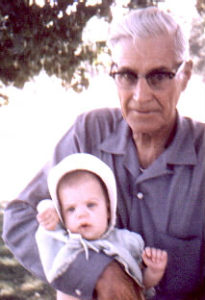
Hazel’s husband, Erich Hugo (born 9.1.1896), (Amy’s paternal grandfather) was the son of Emil Herman KLEMKE(born 22.5/3.6.1866). With his older brother, Frederich Constantin,(born17.2/8.3.1863) younger step-brother, August Theodore (born 18.1/4.2.1872), and their father, August Ludwig (born 28.7/20.8.1826), and his second wife Caroline (born HERSE) KLEMKE (born 30.12.1830;Alt Rüdnitz), left Alt Rüdnitz, in Kreis Königsberg, Neumark, Prussia aboard the NECKAR in (20.11.1880).
NECKAR 1873 http://www.theshipslist.com/ships/descriptions/ShipsN.shtml
The NECKAR was a 3,120 gross ton ship, length 350ft x beam 40ft, one funnel, two masts, iron hull, single screw and a speed of 13 knots, There was accommodation for 144-1st, 68-2nd and 502-3rd class passengers. Built by Caird & Co, Greenock, she was launched for North German Lloyd, Bremen on 10th Nov.1873. Her maiden voyage started on 18th Apr.1874 when she left Bremen for Southampton and New York, and she started her last voyage on this service on 3rd Jan.1886. She was then rebuilt at Bremerhaven with accommodation for 50-1st, 21-2nd and 574-3rd class passengers. On 28th Jul.1886 she commenced her first Bremen – Suez – Far East voyage and on 14th Feb.1894 started her first Naples – New York sailing. Her ninth and last Naples – New York voyage started on 23rd Mar.1895 and she began the first of two Bremen – New York direct sailings on 15th Jun.1895. In 1896 she was scrapped in Italy.
[North Atlantic Seaway by N.R.P.Bonsor, vol.2,p.550]
http://www.theshipslist.com/ships/lines/nglloyd.shtml
August Ludwig KLEMKE’s first wife was Marie (born RICHNOW ) KLEMKE. (born 31.1/15.2.1824).
(More will be written about these people and their ancestors and descendants in other posts).
Following the words of my grandmother, Hazel, I left Japan in November 1999, to visit the area our ancestors came from. I met Tobias and Ute KLEMKE who kindly drove to Berlin from Lübeck. I stayed a night in a Berlin hotel and we met the next morning to cross the bridge over to Poland.
(Though we share the same surname, no known link has been found to date. They remain our dear friends).
Ten years after the end of the Communist Bloc, we did not really have to show our passports, but in 1999, there was a border check. I actually requested a stamp saying POLAND in my passport! 17 years later, in 2016, there was no border check at all!
We crossed the river and drove toward what was Königsberg until 1945 and renamed Chojna afterward. But, I knew we had to turn back and drive along the river. It was so familiar. I had seen many maps of the area. It was autumn and the trees had lost their leaves. It was like eastern Nebraska in the fall. It was like the Missouri River our ancestors had moved to.
We drove through the towns of Stara Rudnica (formerly Alt Rüdnitz until 1945) and Siekierki (formerly Zäckerick until 1945), taking many pictures of homes remaining after the defeat by Russian tanks and soldiers in 1945. Polish families lived in the homes having moved there after 1945 from other parts of Poland. (further articles on that later).
Tobias, Ute, and Amy parked the car, got out and walked toward the Oder River. We found a sandy beach area. And in the autumn chilly air, we proceeded to burn copies of family pictures my parents had sent me and throw the ashes into the river.
I cannot begin to convey how beautiful that moment was. We all cried as we scattered the ashes from each person in a photo, returning their images to the river in which they must have swum and fished in the 19th Century. To this day, it still brings tears to my eyes. I treasure the little bottle of sand from that place. My parents have a bottle of the Oder sand in their home.
It was a memorial service to all who came before, who had joy and despair. It calmed my soul. I am grateful to Tobias and Ute for joining me on that short trip. They have been treasured friends ever since!
For more information on this artistic and musically gifted family, read below.
http://www.klemke.de/english/E0000000.htm
2016 Return to the Oder:
In July of 2015, I received a letter from Ron GLANDT, a distant cousin, asking about information I might have regarding ancestry from Zäckerick and Alt Rüdnitz. He was planning a trip to the Oder area in October of that year. We shared letters intensely, getting ready for his trip, and digging through my online research and contacting other researchers. It was exciting to start that up again. He has become a good friend since then! His mother, Metha Caroline, (28/12.1904) is my grandfather, Erich Hugo’s (9.1.1896) first cousin. Ron’s grandfather is August Theodore KLEMKE . Ron is the same generation as my father, Don KLEMKE, whose grandfather is Emil Herman.
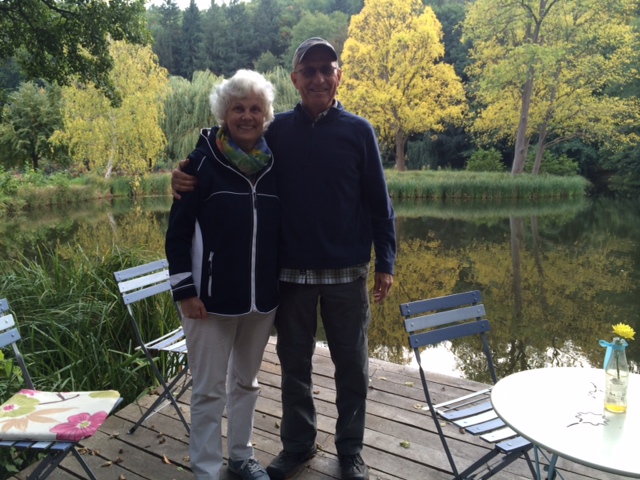
During Ron’s trip to Bad Freienwalde, Brandenburg October of 2015, he was able to contact distant relatives. During their talks, it was realized that Anita, her sisters and their children, Ron and I share the same ancestor, Johann Friedrich KLEMKE (born in 1782 in Alt Rüdnitz; died 4.9.1845 in Zäckerick. He was the first that we know of in a long line of Webermeisters, Weavers and Tailors until 1945 when the last KLEMKE,Heinrich, a tailor ceased to live in Zäckerick. A photo of his flooded home in 1940 appears in this post.
Johann Friedrich KLEMKE is our common ancestor! This is our oldest link in our family.
If you know of “Constantin, Emil Herman, and August Theodore,” you have heard of their father, “August Ludwig.” We have only recently learned of his father and mother.
Allow me to post this here. Some of the names of spouses can be found in the USA and Australia families that emigrated from the Neumark area in the 19th century.
He was born in 1782 in Alt Rüdnitz. He married Dorothea Louise WEGENER in 1817. He died April 9, 1845. Together, they had 5 children (and she had an illegitimate son born in 1813 *Johann Friedrich; born 1813 to Dorothea; married ZIMMERLING Louise, 1844. (half brother to the siblings below).
1.Carl Wilhelm; 4.16/11.1817; Webermeister in Zäckerick; died 27.19.1888.
2.Wilhelmine; 19.9./3.10 1819.
3.Carl August; 16.3./5.4 1822; married PÄTZEL Karoline Wilhelmine 1859 in Zäckerick. (This is the ancestor of the Bad Freienwalde family).
4.Johann Heinrich; born 30.8.1823; married SORGE Henriette Emilie Auguste, Zäckerick, 1852.
5.August Ludwig; born 28.7/20.8.1826; married first wife, RICHNOW Marie, in Zäckerick, 1858. Married second wife, HERSE Caroline; 1871 in Zäckerick. Died Scribner, NE 29.6.1903
This youngest son and the three sons from his marriages moved to the USA in 1880 from Alt Rüdnitz. He is our common ancestor in our family.
They had a combined total of 28 US-born children in Nebraska and Wyoming!
This information came to us from Dr. Thomas Wagner.
Thanks to Ron GLANDT’s research and travel enthusiasm and his contacting people in Bad Freienwalde, Brandenburg, his stories also of the many families he grew up with in Wyoming, I became excited about a return trip to the area. I wanted to see it again, to meet people and get a sense for living in that town and also Schwedt, north along the Oder River. As well as time before 1945, we were also interested to learn more about life during the German Democratic Republic or DDR until 1989.
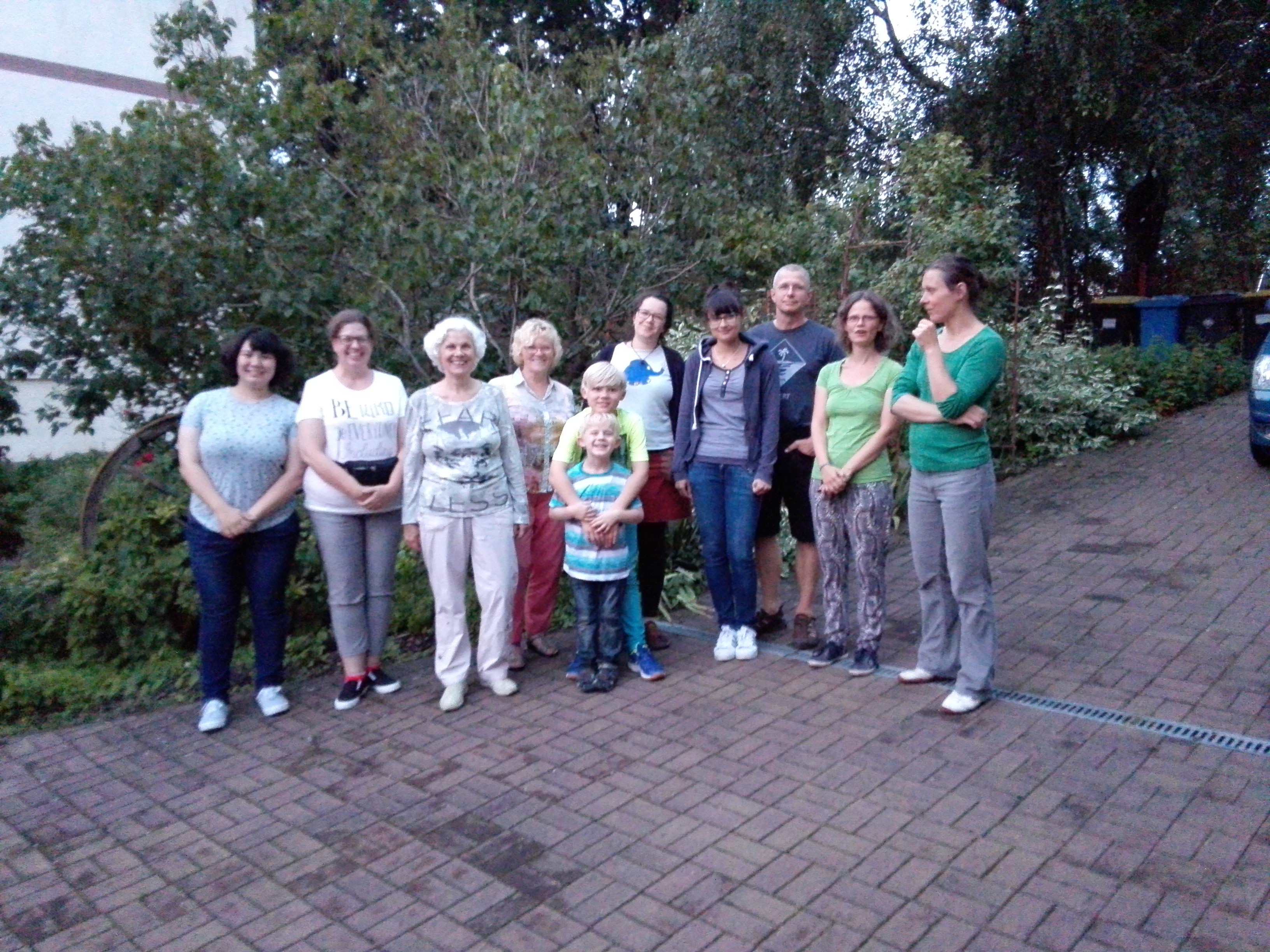
Mina and I booked our tickets and hotels and used the AirBnB system which is doing very well in Brandenburg. We stayed in the center of town across from the St. Nikolai Church, built in the 1300’s.
Our room was on the 2nd floor of the Tourism Center. Everything is within walking distance. The staff was very friendly, helpful that the rooms are very secure. Parking and wi-fi are also available!
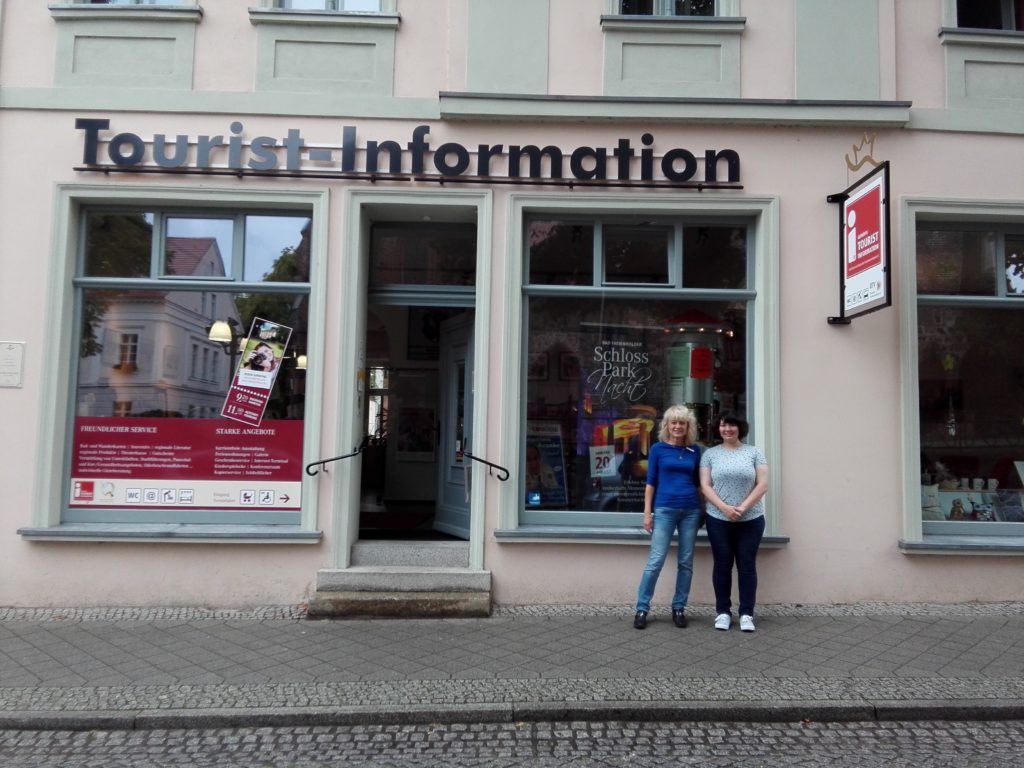
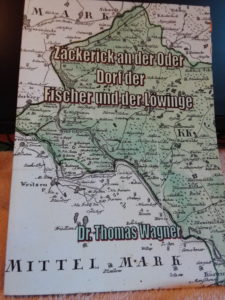
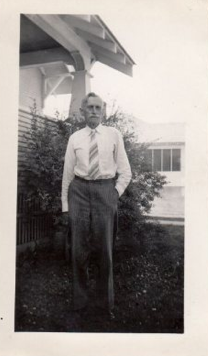
With the encouragement of Rosi, Dr. Thomas WAGNER (author of Zäckerick an der Oder Dorf der Fischer und der Löwinge, available on Amazon.de), US researcher Ed LANIS, Dr. SCHMOOK, curator of the Oderland Museum in Bad Freienwalde (http://www.oderlandmuseum.de) I asked my parents (Don and Betty KLEMKE) to mail a painting from Emil Herman that they had received for their wedding in 1953.
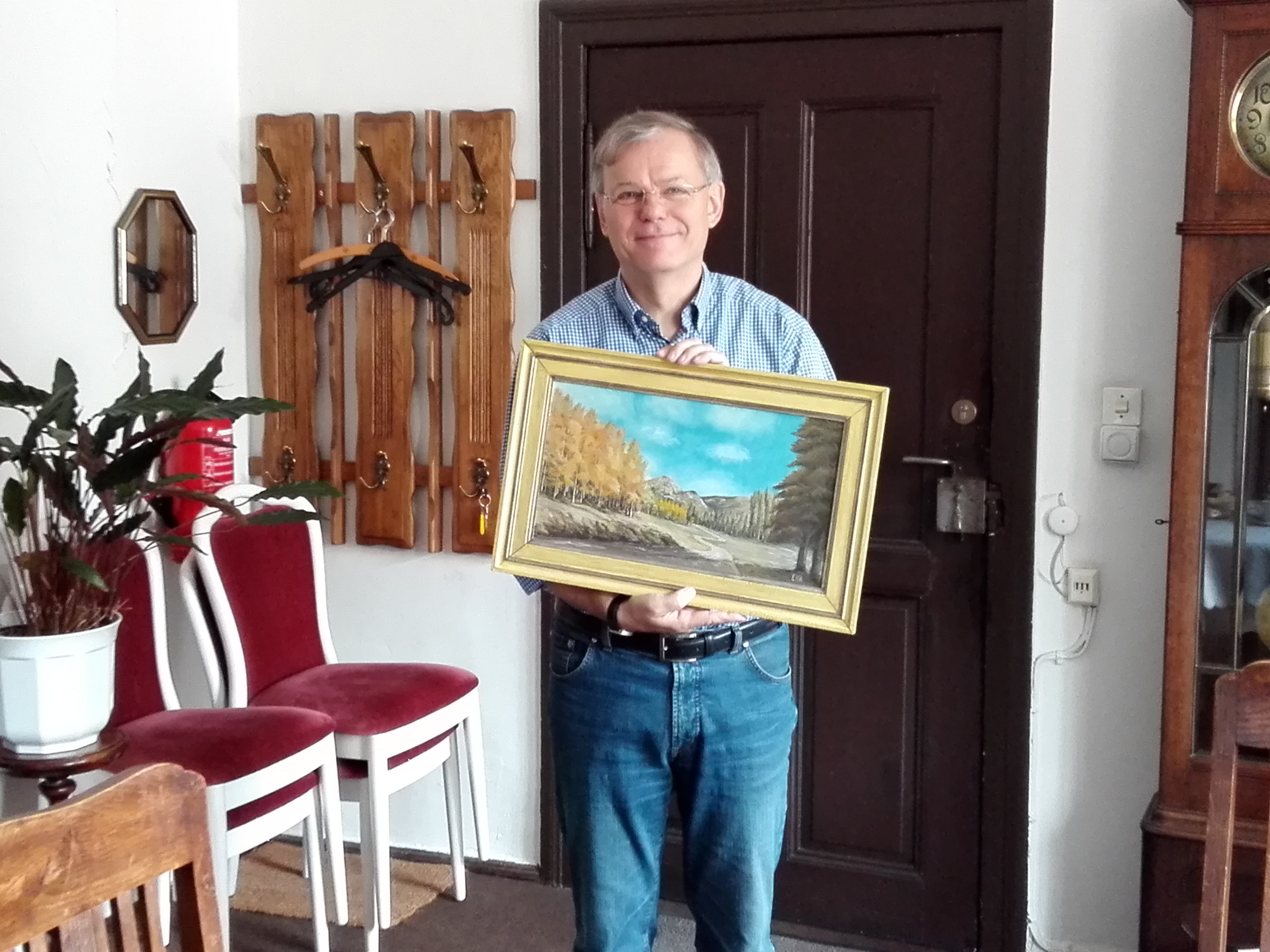
It is a beautiful autumn painting and we decided to donate it to the museum in appreciation for their dedication to preserving the culture and heritage of the Oderland, Oderbruch areas and histories of areas east of the Oder River prior to 1945 when they were lost as part of WWII.
I loved this picture as a child for the path that goes into the forest and encouraged me to follow the path set before me. The destiny is unknown but it continues onward.
Dr. SCHMOOK graciously accepted the painting and had also invited Kurt HAGENSTEIN to meet with us and tell us about his research as he was born in Zäckerick. He is 90 years of age. We enjoyed looking at his extensive research. He will donate it to the Oderland Museum. His maps and photos, are an instrumental part of research on the area and can be seen in Dr. WAGNER’s book.
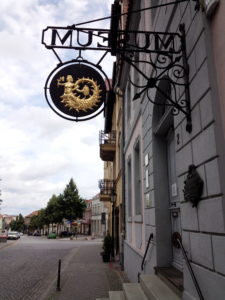
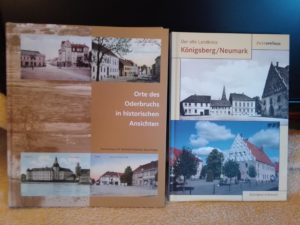
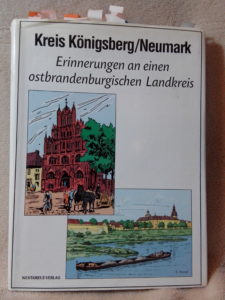
Mr. Kurt HAGENSTEIN has written a book about his youth, “Meine Jugendjahre an der Front des Krieges”.
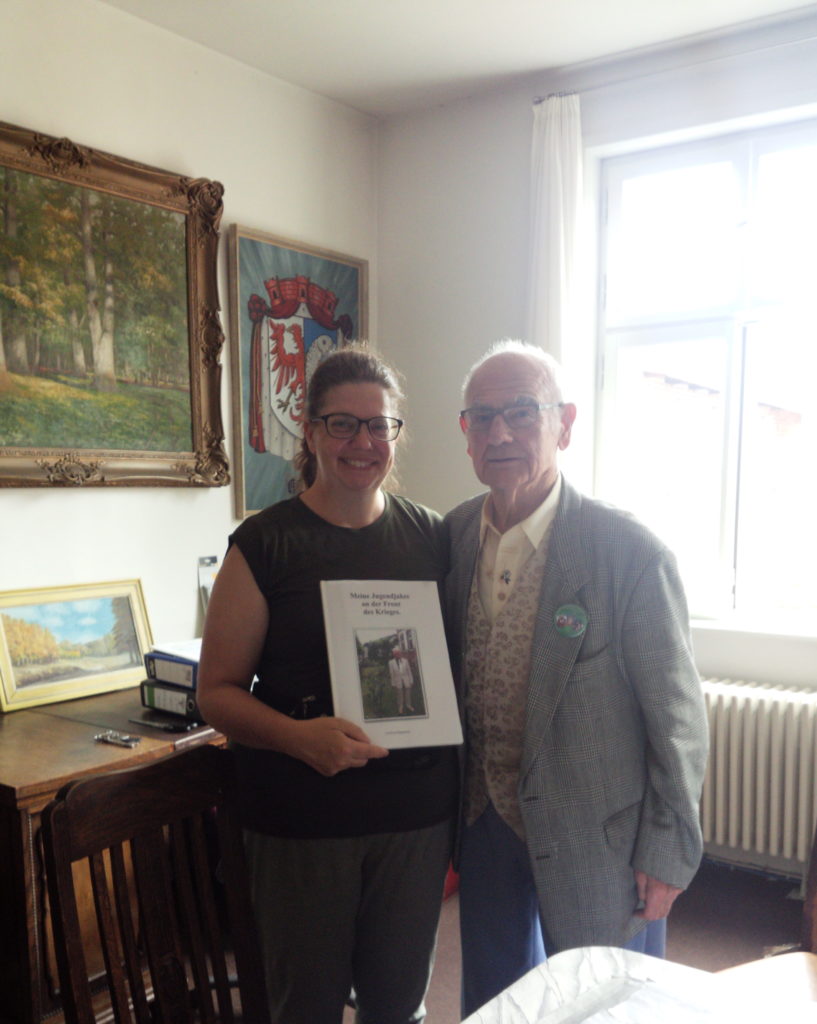
The House on the Oder
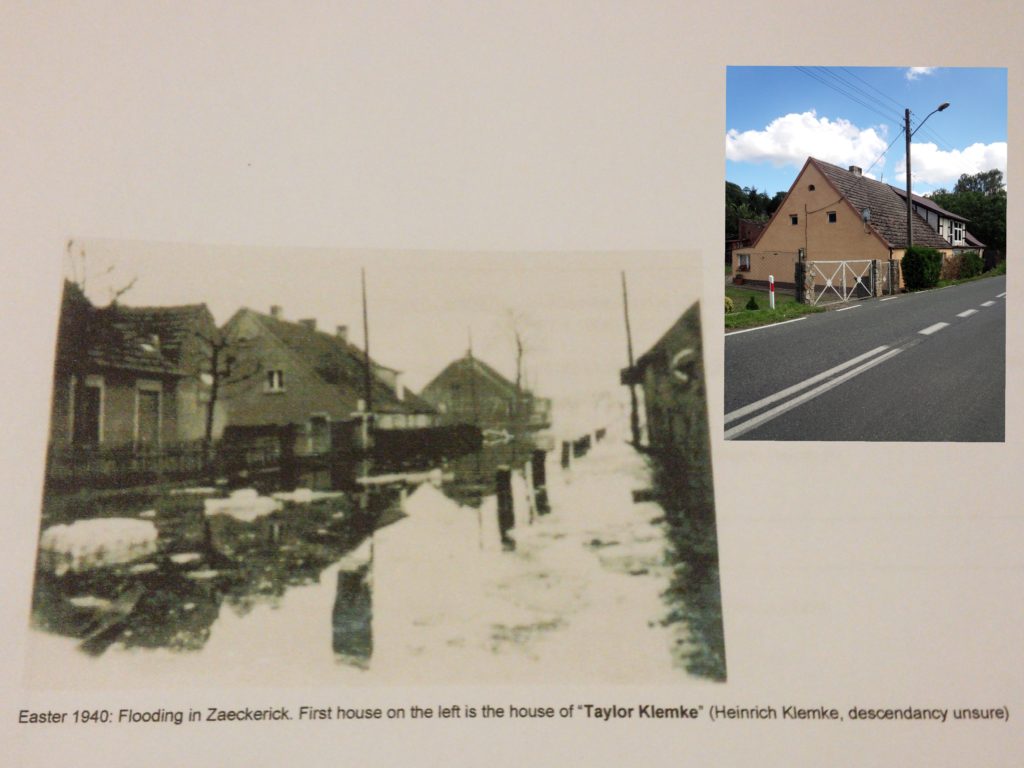
On Saturday, August 6th, we drove with Anita and Kurt across the bridge from Hohenwutzen to Stara Rudnica (Alt Rüdnitz until 1945) and Siekierki (Zäckerick until 1945). Anita showed us the church where her mother was baptized and her mother’s home. Her paternal line is from Zäckerick and her maternal line is from now Osinow Dolny (Niederwutzen until 1945) and Alt Rüdnitz. Such a beautiful area and we were also happy to see some actual stork nests on platforms above electric poles.
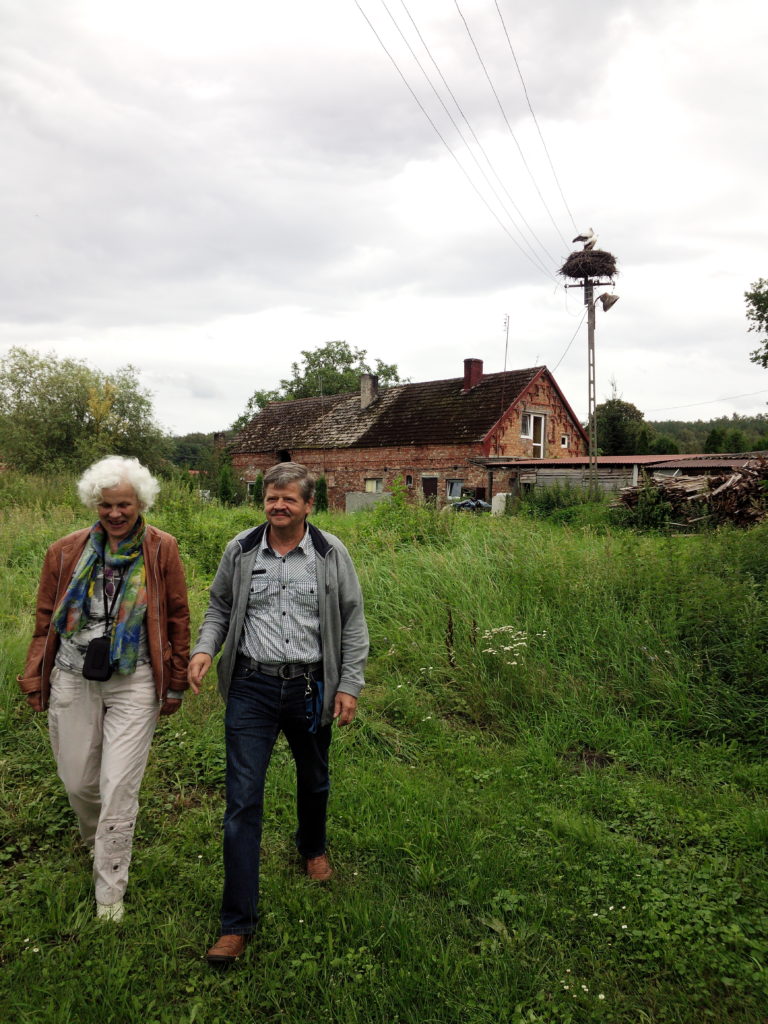
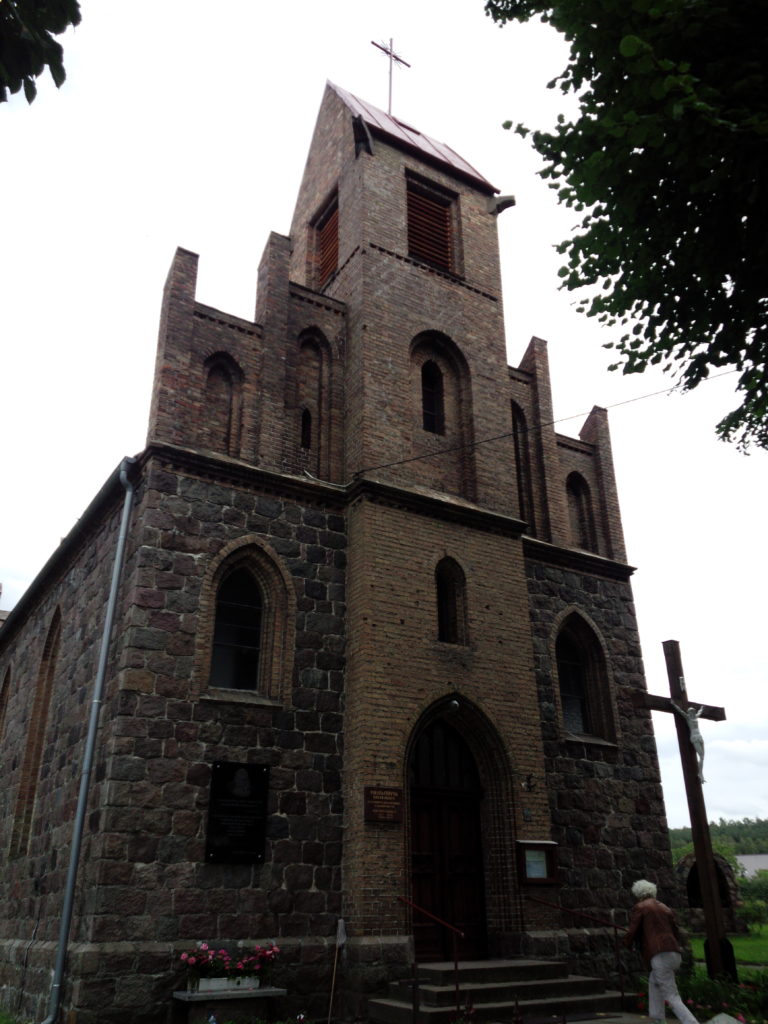
With a photo sent to us from Dr. Wagner gathered by Mr. HAGENSTEIN and the map showing house numbers, owners and occupations (see pages 60-66 in Dr. Wagner’s book), Anita asked kind Polish neighbors if they would help us identify the home of Heinrich KLEMKE, Schneider/Tailor who lived in Zäckerick until 1945. House Number 56 appears in the photo that shows a row of homes flooded in 1940 . Flooding is to be expected on the Oder. These are actual ice bergs in the river up to the house. (In one picture, we saw swans in a flood picture next to a house).
With enthusiasm, we gathered, laughed, tried to identify a home exactly like a home in the photo. Our eyes said it was the same, a double home altered a bit over the years. It was on the left as in the picture.
It must be the home, we assured ourselves. In looking at the picture again, we reread the caption at the bottom that reads the KLEMKE home is “the first house on the left”.
What that meant was that we were looking at number 57/58, the home of the ZILLINGER and KNOLL families. Indeed, the second home on the left!!
When I realized this mistake on my part, and my desire to find that home standing, my heart literally sank. “Oh, it is the vacant lot, the empty parcel of land that is where the KLEMKE house stood”. Even at writing this now, I cry a bit.
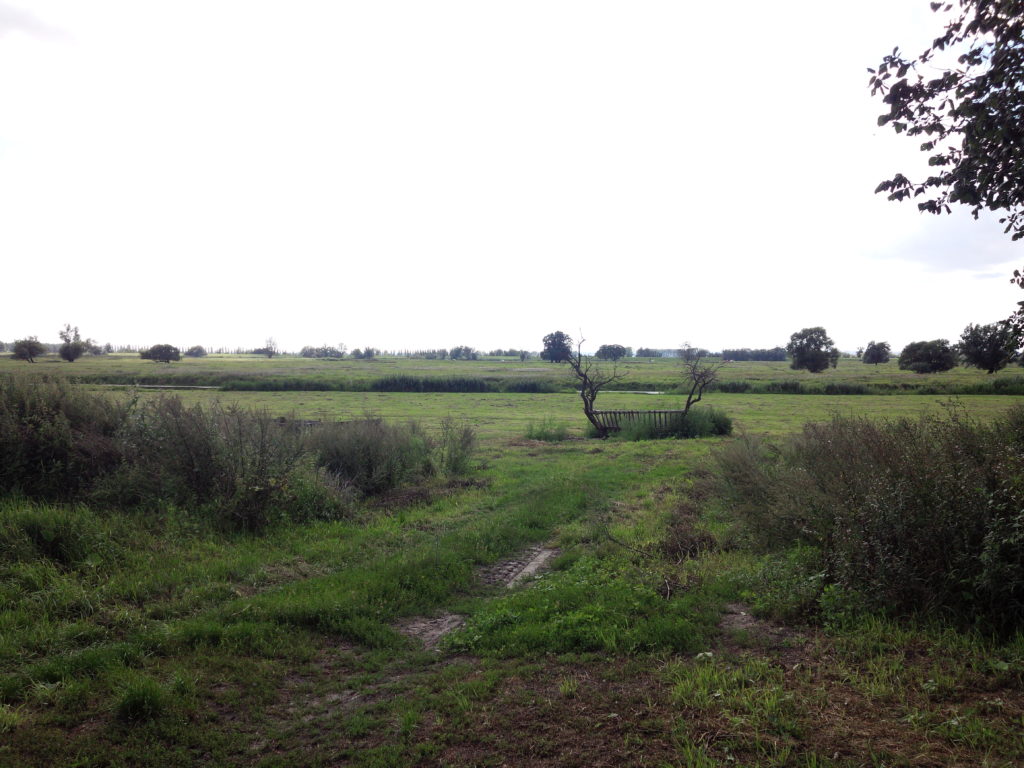
There is no ancestral home standing. We find ourselves part of the lives now of the many refugees who fled for their lives, who left behind homes and relatives who were not able to flee across the Oder River as the tanks and soldiers came.
Later, we drove back to Siekierki to see if any RICHNOW homes remained.
We went to number 71, belonging to Ernst RICHNOW; *Kolonial-&Materialwaren.
( Not standing. Cleared land on the main road).
*(Read more on the retail shops selling “colonial goods” or products from countries trading with Germany in the 19th and early 20th centuries: http://en.wikipedia.org/wiki/Colonial_goods )
Next to number 78, belonging to Martin RICHNOW; Imker/ Bee Keeper.
(Not standing. Cleared land on the main road).
Finally, we went up the street to the left of the vacant lot where the KLEMKE house had been at 56, belonging to Heinrich KLEMKE. We drove up the dirt road, and then perhaps a hunting trail on the map, dotted, to find number 165, belonging to Otto RICHNOW….. (Not standing. Now a forest).
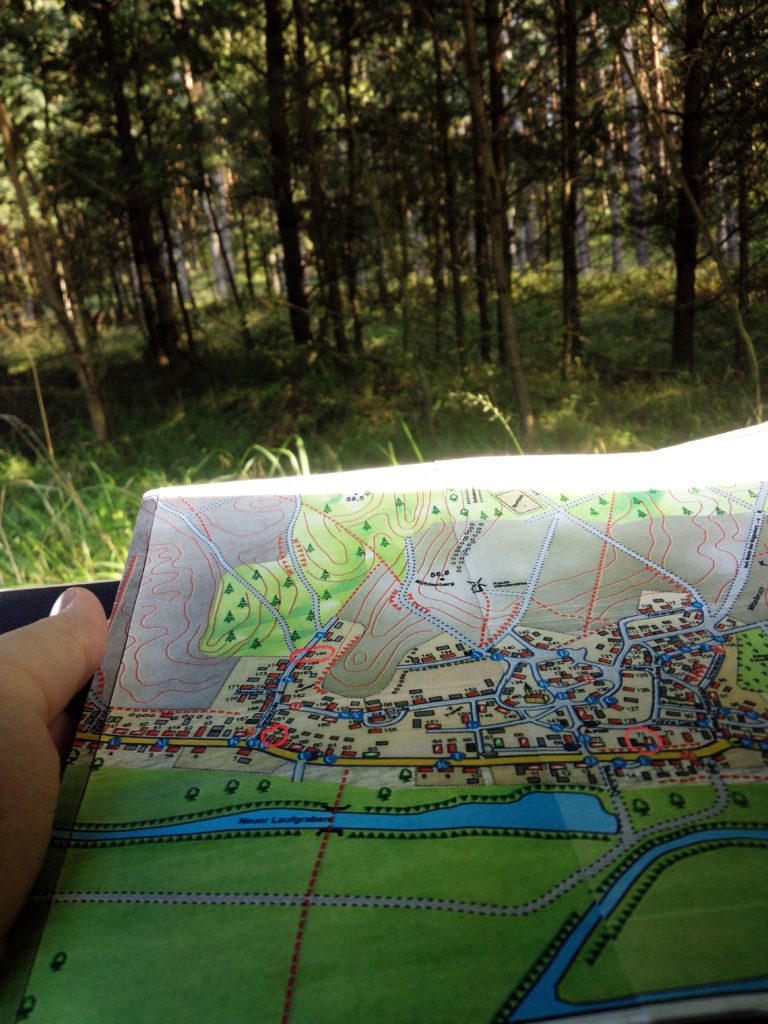

This is a photo of the train station from Alt Rüdnitz/Stara Rudnica. August Ludwig KLEMKE, Caroline (born HERSE) KLEMKE, Friedrich Constantin KLEMKE, Emil Herman KLEMKE, August Theodore KLEMKE and the family of Caroline’s brother Ludwig HERSE, left from this train station on their way to Dodge and Cuming County, Nebraska).
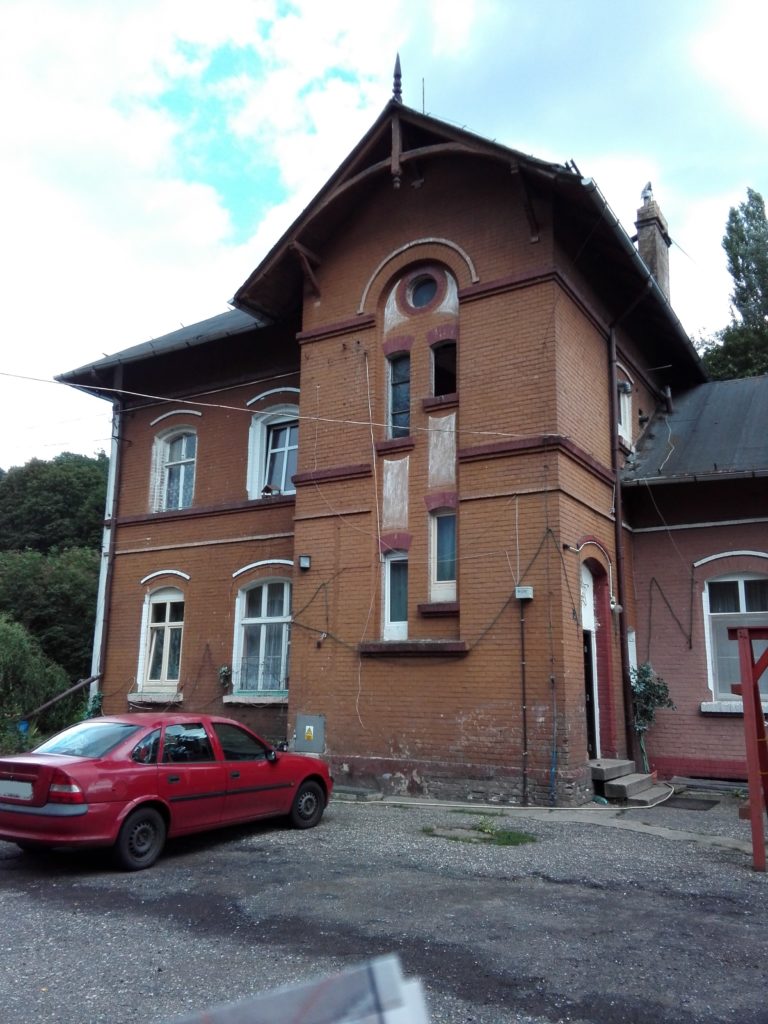
Our ancestors left for the USA in 1880 and faced WWI, WWII, the Korean and Vietnam Wars and the wars of the 1980’s until now. Our cousins who did not leave, faced WWI, WWII, East Germany (DDR), a united Germany.
In 1999, I visited a different Oder. We used the Deutsch Mark currency. It was autumn, cold and stark. I thought it would be the last time for us to visit. I had a feeling of melancholy.
In 2016, it was summer. Everything was bursting with life: plants, birds, fish. People rode bikes, walked, canoed, and we used the Euro, even in Poland though they have the zloty. We shopped and ate in Poland as well as in Germany.
A war-torn building that still remains, across the river from the German town of Hohenwutzen is unable to be used but provides an interesting back drop and grounds for merchants selling food, daily supplies and lawn ornaments and gasoline. Berliners also drive there for cheaper products, hair salons and restaurants in Chojna.
And we will go again.
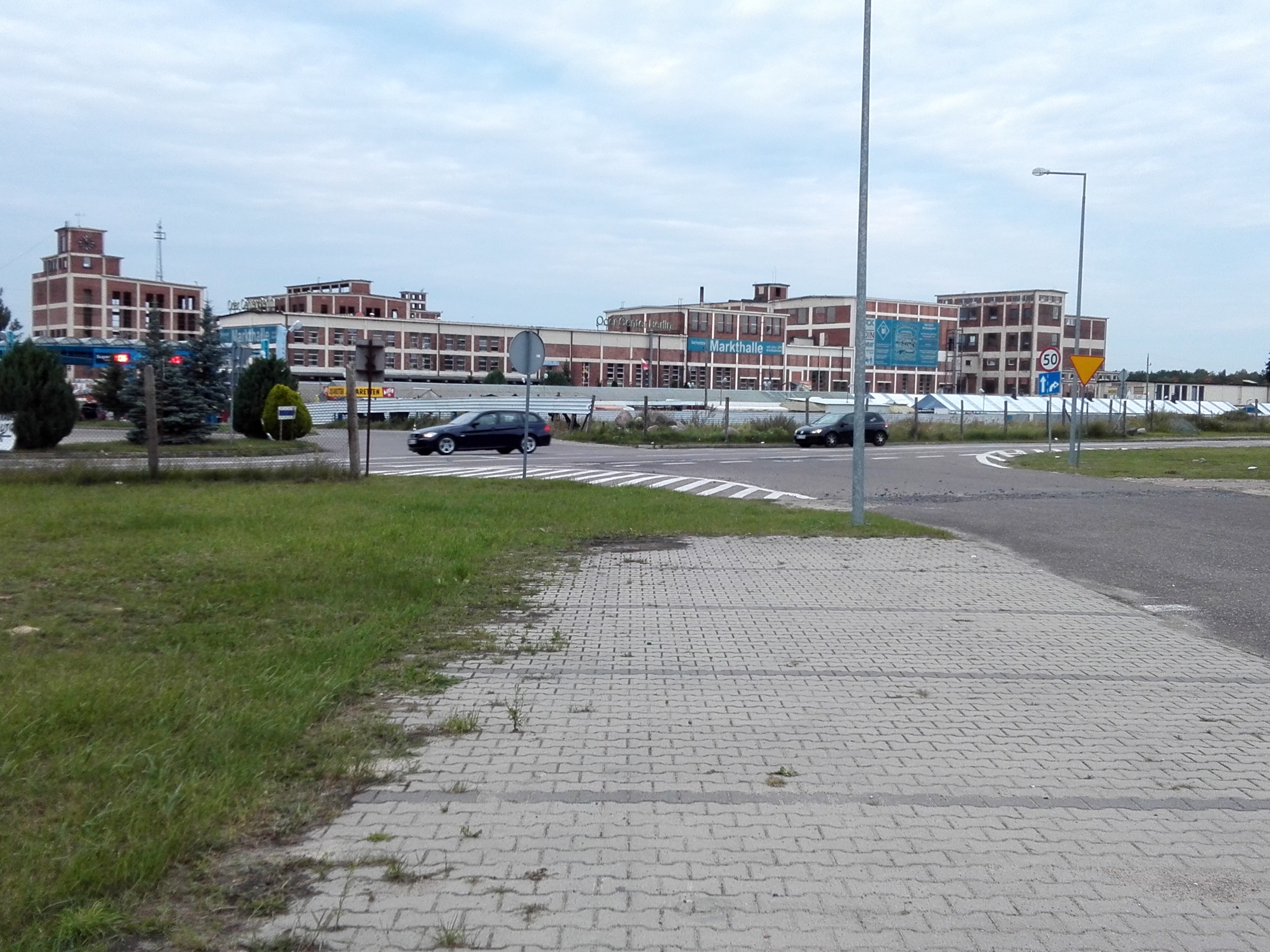
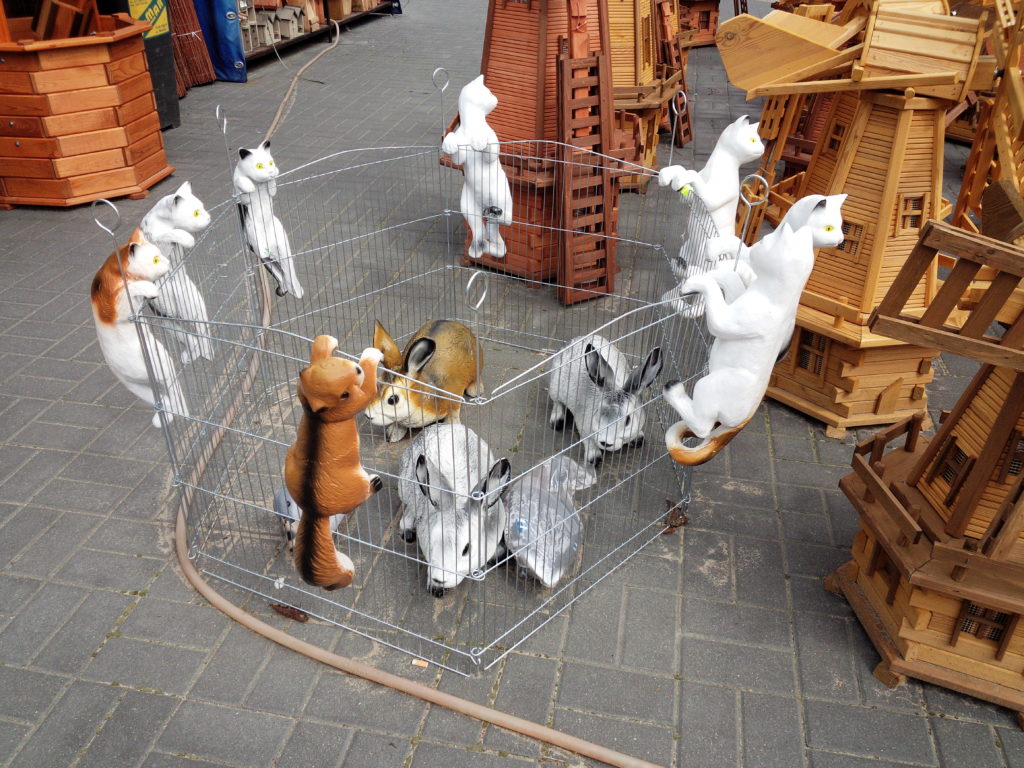
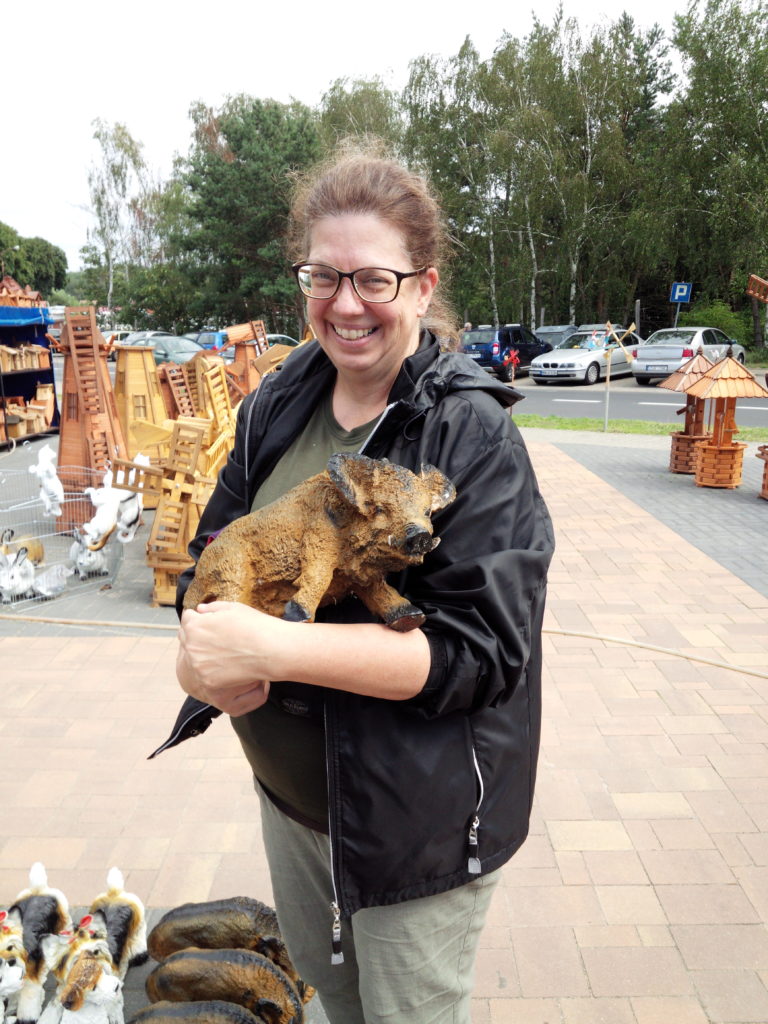
Mina and Amy drive back to Germany bidding farewell to the towns east of the Oder, Alt Ruednitz and Zaeckerick.
Amy and Mina, thanks for posting this article and videos. A distant cousin of mine originally from St Paul, Illinois (whom I have not met) made the trip to Sierkierki several years ago. Relatives from the German side took him
across the bridge. He and others along the way have shared info on Zackerick including my GG grandpa’s name and pictures of the village. Sometime back, I ran into a post by Amy on emigrants leaving Zackerick for the USA and found my great grandpa’s family plus the names of 3 men who might be his brothers (family lore has 4 brothers coming to America). I’m getting back into my family’s history and have hired a researcher to try to find my great grandparents and their siblings in the Zackerick church records. I really enjoyed the article and will look at some of the others now. Thanks again !